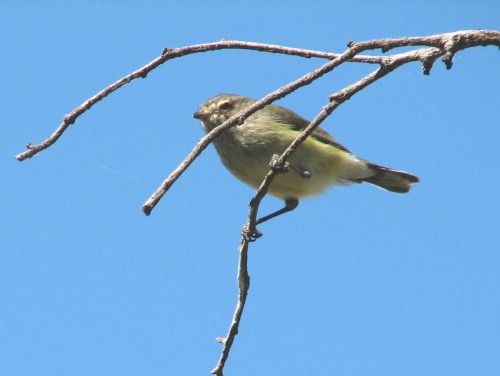A little bird encounter
I haven’t ventured out much over the last few weeks. It has been a wet winter so far and we’ve have many rain-sodden days. On the days where it hasn’t rained, we’ve either had frequent showers, overcast skies or bitterly cold winds – sometimes all three. The weather has not encouraged anyone to be out in it. Added to my misery of being stuck indoors was the fact that I’ve been very sick over that period. Bronchitis (and several other health issues) has made life even more miserable than it already was.
I’m slowly on the mend, and today we had a lovely winter’s day, typical of many days at this time of the year. After a cold night and a near frosty morning, the sun shone brightly all day. I even managed a half hour of reading while sitting in the sun on our back veranda. It was delightful, and I received a good dose of vitamin D as a bonus. I hope it will help the healing process.
At one stage I wandered up into our small patch of mallee scrub. Mallee trees are eucalypts and are very common in this part of South Australia. As I slowly walked through the trees a small group of Weebills sat calling sweetly in the branches not two metres above my head. They weren’t at all perplexed by my presence.
Lovely.
New Holland Honeyeaters
New Holland Honeyeaters are a common Australian bird, especially in parks and gardens. Good views of them can be easily had as they flit to and fro from bush to bush. Sometimes they even sit still enough for good views of their beautiful markings. On rare occasions they even sit long enough to capture a photograph!
This stunning photograph was taken a few days ago while looking over our neighbour’s fence. The bird posed long enough for me to take several shots. The green object it is perched on is the handle of a small hand operated plough. Our neighbour has several old farm implements in his front garden.
Over the years I have been interested in the occurrence of New Holland Honeyeaters in our garden. They are probably the most numerous and widespread species of honeyeater in the Murray Bridge region. In the first 15 years of us living here they were only occasional visitors to our garden and patch of mallee scrub. I have kept monthly records of all birds seen on our property since January 1985. My database of bird observations (BirdInfo – which is no longer available) shows a sudden increase of observations in late 1998. From that time to the present New Holland Honeyeaters have been the predominant honeyeater species here.
Other species of honeyeaters recorded here include:
Red Wattlebird: resident, breeding species.
White Plumed Honeyeater (resident, breeding)
Spiny Cheeked Honeyeater (resident, breeding)
Striped Honeyeater (occasional visitor, one breeding record)
White-Eared Honeyeater (occasional visitor)
Yellow Plumed Honeyeater (occasional visitor)
Singing Honeyeater (resident, breeding)
Brown-Headed Honeyeater (resident, breeding).
You can find photos of many of these honeyeater species, including photos, by searching on this site, or clicking on the species name (not all have links).
One possible explanation of this change is the maturing of many of the native Australian plants we have planted over the years. Our property is now far more bird welcoming than, say 15 years ago.
Update: this post was updated on November 5th, 2013.


